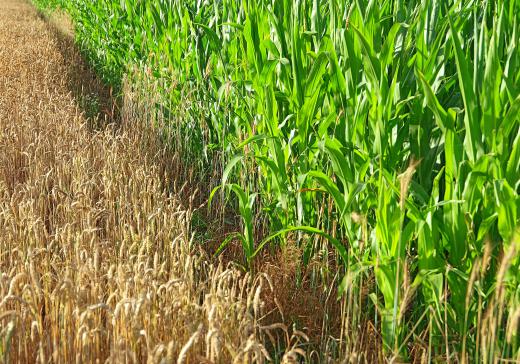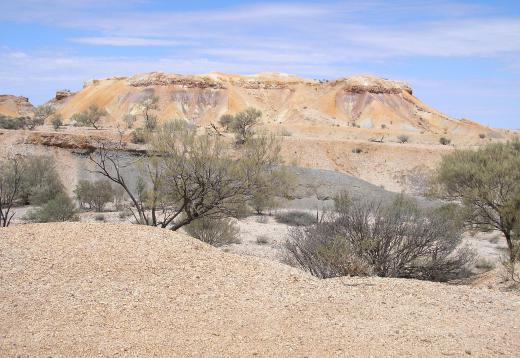What Is Wind Erosion?
Wind erosion is a natural process by which landforms are altered by the action of wind. This can take place in two main ways. Wind can dislodge and transport soil, silt and sand particles, sometimes carrying them long distances and depositing them in other areas, and it can wear down surfaces by the abrasive effect of small, airborne mineral particles, resulting in a number of characteristic formations. Soil erosion by wind is a serious problem in many parts of the world and can have a major economic impact. The problem has been aggravated by human activities in many areas.
It is in the arid and semi-arid regions of the world that erosion by wind is mainly seen, due to the lack of moisture necessary to hold soil particles together. Sparse vegetation also contributes to wind erosion effects, as plant roots help to hold soil together while stems and foliage tend to impede wind. Transportation of material by wind can take the form of suspension, where very small particles remain suspended in the air and can be carried for long distances, and saltation, where larger particles bounce along the surface, sometimes dislodging more particles as they go along. This results in some areas becoming depleted in small particles and other areas, where these particles are deposited, being transformed by an accumulation of dust, silt or sand.

The process of removal of small particles from a soil surface by wind is known as deflation. It results in a lowering of the soil surface, forming deflation hollows in some areas, and in a surface composed mostly or entirely of larger particles that have been left behind, known as desert pavement. Material is usually deposited by wind where there is some kind of obstruction, such as rocks, vegetation or man-made structures — the wind speed is reduced where it flows over the obstruction and material drops to the ground. Deposited material can itself form an obstruction that causes further wind-blown material to accumulate, as is the case with sand dunes, which can cover very large areas, such as the Great Eastern Erg and Great Western Erg in the Sahara Desert of North Africa. Dust and silt deposited by wind is known as loess, and can also cover wide areas.

The wearing down of rock surfaces by wind-blown particles is known as abrasion and the resulting rock forms are known as ventifacts. Among the most common ventifacts seen in desert areas are flat, smooth rock surfaces facing the prevailing wind direction and angled at 30-60 degrees to the horizontal, often with distinctive grooves and pits. The presence of these rock forms in sediments is an indicator of an arid climate in the past. Long, wind-sculpted ridges which taper downwind are known as yardangs, and can be seen in many desert areas. Ventifacts have been also been observed on the surface of Mars.

Wind erosion of soil can render large areas of land uncultivable and can lead to the expansion of deserts, as ground depleted of soil and smaller particles is less able to retain moisture. Although soil erosion occurs naturally, intensive agriculture and deforestation have made soil more vulnerable to wind erosion by exposing the surface, increasing evaporation and removing protective cover. Wind-blown dust resulting from soil erosion can also pose a hazard by reducing air quality and visibility, clogging up machinery and accumulating in rivers, raising the riverbed and increasing the risk of flooding. One of the worst examples of wind soil erosion was the “Dust Bowl” during the 1930s in the Southern and Central Great Plains of America and it continues to be a problem in the more arid parts of the world.
AS FEATURED ON:
AS FEATURED ON:














Discussion Comments
I have spent time in the Middle East on several occasions. Once you have experienced and withstood one of the desert sand storms there, you have a great deal of respect for the effects of strong winds and loose soil. When I was there the first time, my group got caught in a haboob, which is basically a really intense sand storm.
The experience of being in the storm was unlike anything else I have ever experienced. Nothing compares to seeing a seemingly endless wall of sand coming right at you and then blocking out all light as it passes.
In the last paragraph of this article, there is a reference to the Dust Bowl of the 1930s. I can remember being in school and studying just how big of disaster this was, and then talking with my father who had lived during this time.
I think most people in countries like the United States where water is available in most areas of the country and there are not usually massive areas of land being drought stricken for years and years at a time don't really have an idea of what the drought and wind erosion was like in the 1930s.
Sure we still have droughts, but not like in the 1930s. My father told me a story about how during the Dust Bowl, there was one very large dust storm that traveled 2000 miles and reached the east coast. That's difficult to imagine.
Post your comments